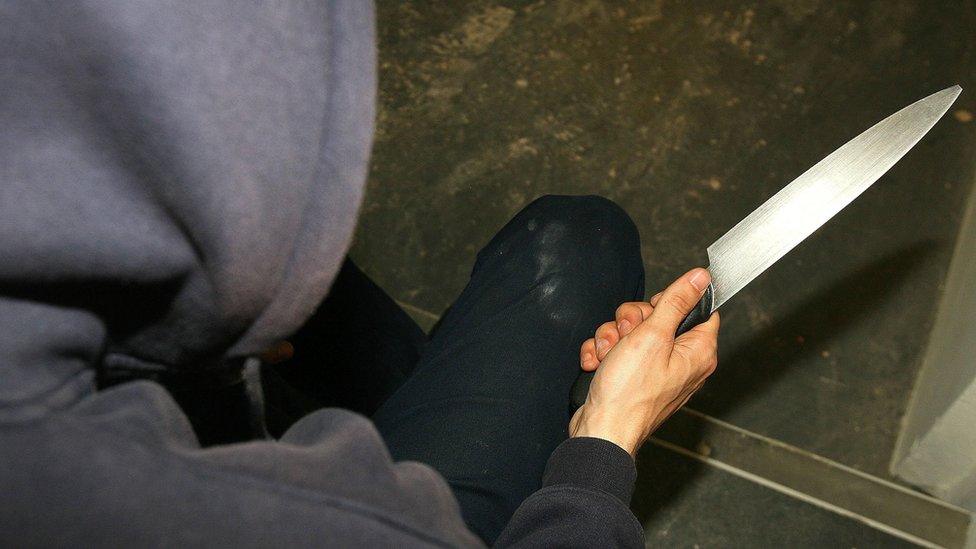Dealing with the rising tide of knife crime
- Published

The knife has long been the most common murder weapon in Britain, but increasingly it has become the weapon of choice for teenage gangs in the big cities.
Two-thirds of police forces in England and Wales recently responded to a Freedom of Information request from Channel 4's Dispatches which showed that, in those force areas, the number of teenagers recorded as having killed with a knife had risen from 26 in 2016 to 46 last year.
Patient records from hospitals in England show that seven years ago 141 teenagers were admitted after assaults with a sharp implement like a knife. Last year it was almost twice that - with a clear rising trend.
In London, where knife crime incidents are higher than any other part of the country, both the victims and perpetrators of stabbings are disproportionately young black men from poorer neighbourhoods. In other cities the profile may be different.
It is a crime that feeds on itself. If one young person gets stabbed, similar youngsters locally are more likely to carry a knife for their own protection - and so the infection spreads.
That idea of an infection is also prompting government proposals to deal with knife crime in the same way you might deal with a public health emergency.
It means still treating each case as a crime, but also looking to stop knife crime before it starts - in families and places such as schools and youth centres.
Evidence suggests the way to stop young people being stabbed does not lie exclusively with the criminal justice system.
- Published4 March 2019
- Published7 February 2019
- Published4 March 2019
- Published3 March 2019